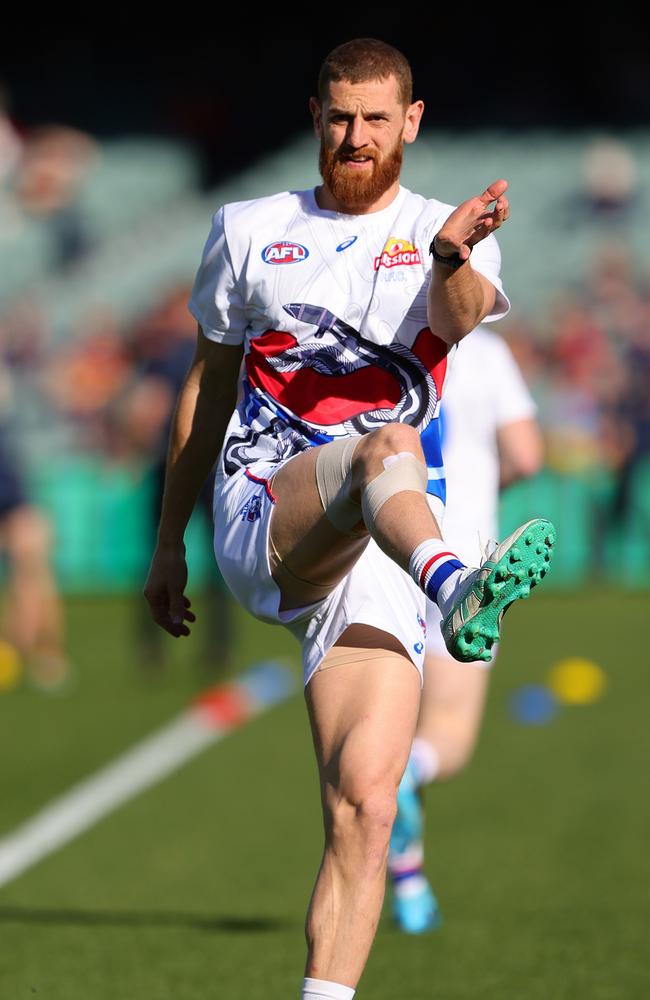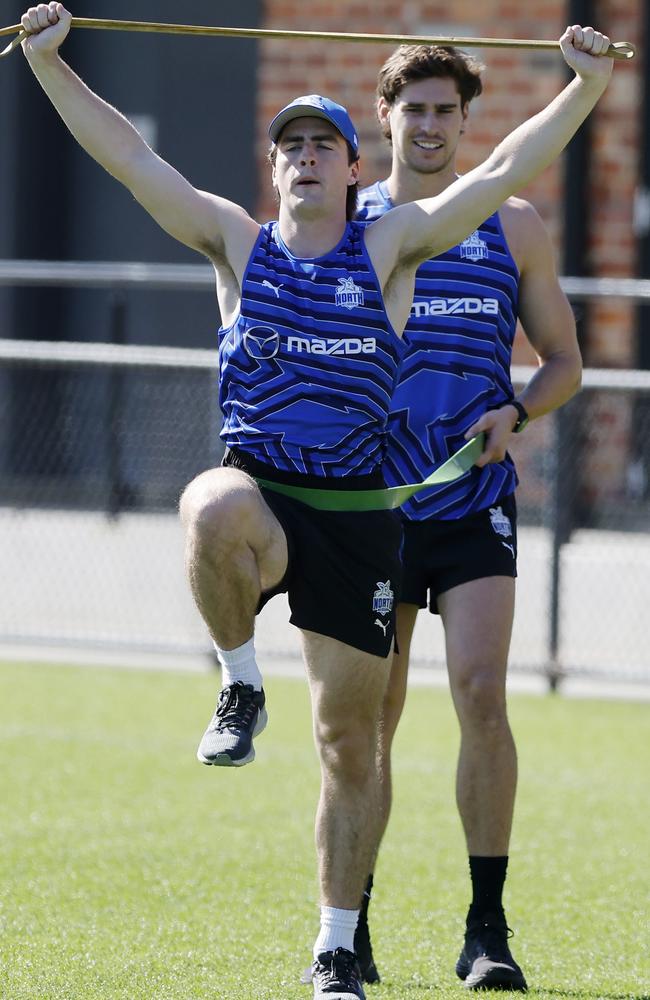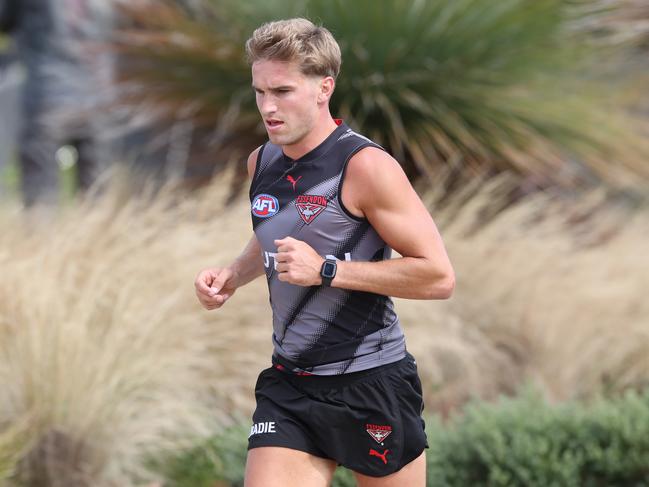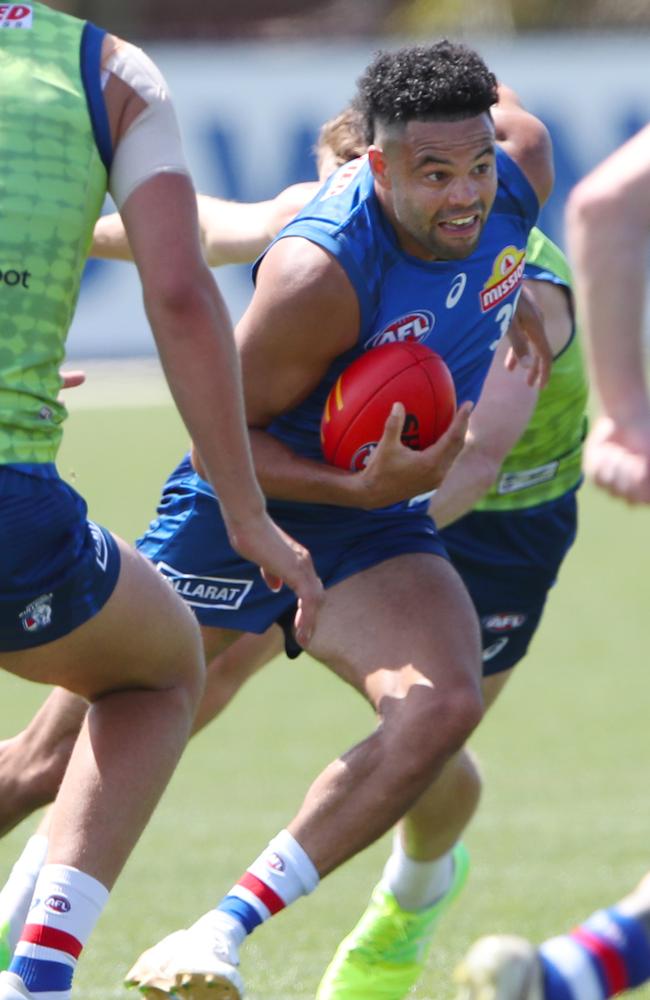Why AFL hamstring injury crisis has taken the league at the height of pre-season
Four players went down with serious hamstring injuries within a week. JOSH BARNES unpacks what’s happening – and why clubs may be to blame.
AFL
Don't miss out on the headlines from AFL. Followed categories will be added to My News.
A quartet of serious hamstring injuries just weeks out from practice matches has AFL clubs scratching their heads as an expert questions whether players are being pushed too far in pre-season.
Bulldogs defender Liam Jones and Bombers forward Matt Guelfi on Monday joined Kangaroo young gun George Wardlaw and Dogs veteran Jason Johannisen in the medical room with serious hamstring injuries suffered in a week-long spate.
Each of the four will miss the opening rounds of the season, with all players expected to be sidelined for more than two months.

Within the last week, Melbourne forward Jake Melksham and Fremantle budding star Hayden Young also went down with lesser strains.
Clubs have long expected injuries in the dog days of pre-season as practice matches draw closer, with one club figure admitting “you may unfortunately lose a few”.
Those who run the programs expect pressure on bodies of players when more match simulation picks up, given the miles pumped into the legs of players through January.
Dr Steven Duhig, a lecturer at Griffith University who researched hamstring injuries for a PhD, said that overuse of the legs can prompt twanged hammies.

Overuse can particularly impact the hamstring tendon, which leads to more serious strains than lower down the muscle.
“There is this spike and it seems to be four weeks leading up to injury and if that exceeds what they have been doing … if they did above that for an elevated period of time, then bang, they go,” he said.
“You could say, they have had a bit of time back from the Christmas break, they have now elevated that intensity again because they are stepping into match play and perhaps those guys, the hamstrings haven’t been handling it.”
As one club figure noted, despite the investment in sports science by all teams, hamstrings remain the most common injury league-wide.

In the AFL’s most recent injury report, there was an average of 4.71 hamstring injuries at each club in the 2023 season, ahead of concussions (4.26).
“You run, you kick, you bend over to pick the ball up, you accelerate and decelerate and just the amount of running you do … it’s the perfect recipe for hamstring strains,” Dr Duhig said.
“I think we are pushing harder and harder and trying to get them stronger and fitter and maybe we have gone too far.”
North Melbourne thought Wardlaw was on top of hamstring issues that began before he was drafted to Arden St and he had not suffered an injury there in 18 months.
But the tough nut went down during at the start of training last week when he appeared to not be moving at maximum speed.
Essendon thought it was doing everything right to push Guelfi past a hamstring setback suffered in the final training session before Christmas.

The 27-year-old had been to the United States during the off-season to get on top of his soft tissue woes and was working through a specific program that saw him running long laps around the entire precinct of the Hangar – up and down hills – to build strength.
But his hamstring snapped and he was sent for surgery.
Norm Smith medallist Johannisen has been dogged by soft tissue woes before, having missed 26 games due to hamstrings and 23 due to calf injuries since his first year at Western Bulldogs in 2012.
Dr Duhig spent time working on shoulder injuries in Olympic swim coach Michael Bohl’s squad – which includes Australian golden girl Emma McKeon.
He said his team had started developing tests which can predict when shoulder injuries are around the corner, but the technology isn’t advanced enough on hamstrings.
“We have all these new assessments and yet we still seem to be getting these injuries, it is mind boggling isn’t it,” he said.
Respected sports medico Dr Peter Larkins believes clubs are adding more time for hamstring recovery than in the past knowing that players are more likely to twang the injury again that season once they to it in summer.
More Coverage
Originally published as Why AFL hamstring injury crisis has taken the league at the height of pre-season





